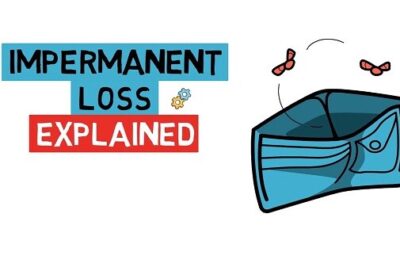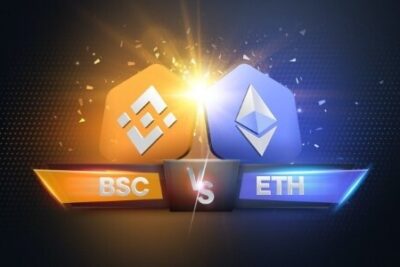

What Is AMM Crypto? Its Vital Roles In Cryptocurrency World
16 March 2022
With the help of AMM crypto, assets are exchanged by employing crypto liquidity pools as participants via DEXs, rather than conventional buyers and sellers in the traditional markets
As a result of the elimination of intermediaries, decentralized financial markets are becoming more popular. The Automated Market Maker (AMM) is one of the unheralded heroes of this triumph.
In decentralized exchanges with a self-governing trading mechanism, the underlying protocol is called AMM. As a result, financial institutions such as exchanges and other centralized authorities are no longer required. In a nutshell, it enables two people to swap their assets without the assistance of a middleman. Let’s bePAY make it clear for you.
What Is An AMM?
Before explaining what is an AMM you must understand what is market maker?
What Is Market Maker?
You can easy to understand what is market maker? As the middleman between buyers and sellers. The phrase “market maker” refers to a corporation or person who actively quotes two-sided markets in a given security, delivering bids and offers (referred to as requests) together with their respective market sizes. Market makers provide liquidity and depth to markets and benefit from the bid-ask spread discrepancy. Additionally, they may conduct trading for their own accounts, referred to as main trades.
The Need For Automated Market Marker (AMM)
In the early 1990s, Shearson Lehman Brothers and ATD introduced AMM systems, which replaced order books maintained by people who manually launched transactions to increase market liquidity.
Some price discovery slippage and lag occurred as a result of this strategy. In addition, market makers were accused of market manipulation as well. After their introduction, AMMs solved all of human market makers’ problems. Now, similar techniques are also being used in decentralized exchanges based on the blockchain.

AMM explanation
Liquidity pools pre-funded on-chain for both assets in the trading pair replace the conventional order book on AMM-based decentralized exchanges. The liquidity is supplied by other users, who receive trading fees depending on the proportion of the liquidity pool they supply as a passive income from their deposits.
Uniswap, an Ethereum network-based decentralized exchange, has incorporated an AMM. Users of Uniswap may use it to either offer liquidity in return for passive income or to trade between different assets.
>> Read also: What is KYC crypto & why do you need it?
How Do AMM Determine Price?
To begin, there are two critical points to understand regarding AMMs:
- Trading pairings that would typically be found on a centralized exchange exist in AMMs as separate “liquidity pools.” If you wanted to trade ether for tether, for example, you would need to locate an ETH/DAI liquidity pool.
- Rather than relying on specialized market makers, anybody may offer liquidity to these pools by depositing both of the pool’s assets. For instance, if you wanted to become a liquidity provider for an ETH/DAI pool, you would need to deposit a certain amount of ETH and DAI.

Two points to understand regarding AMMs
AMMs use predefined mathematical calculations to ensure that the ratio of assets in liquidity pools is as balanced as feasible and to prevent anomalies in the price of pooled assets. For example, Uniswap and a large number of other DeFi exchange protocols define the mathematical link between the specific assets stored in the liquidity pools using a simple x*y=k equation.
In this case, x symbolizes the value of Asset A, y is the value of Asset B and k is a constant.
In essence, Uniswap’s liquidity pools constantly maintain a condition in which the product of the prices of Asset A and B equals the same amount.
To illustrate how this works, consider an ETH/DAI liquidity pool as an example. When traders buy ETH, they contribute DAI to the pool and withdraw ETH. This decreases the quantity of ETH in the pool, which results in a rise in the price of ETH in order to maintain the balancing effect of x*y=k. In comparison, the price of DAI lowers when more DAI is added to the pool. When DAI is acquired, the price of ETH in the pool decreases while the price of DAI increases.
When substantial orders are issued in AMMs when a significant quantity of a token is withdrawn or added to a pool, significant differences between the asset’s pool price and its market price (the price at which it trades on various exchanges) might occur. For instance, the market price of ETH may be $3,000, but it may be $2,850 in a pool due to someone adding a large amount of ETH to the pool in order to remove another coin.

Automated market marker works
This implies that ETH will trade at a discount in the pool, hence offering an arbitrage opportunity. Arbitrage trading is a method that involves identifying price disparities between assets on several exchanges, purchasing them on the platform where they are somewhat cheaper, and selling them on the platform where they are slightly more expensive.
Arbitrage traders are financially motivated by AMMs to identify assets selling at a discount in liquidity pools and purchase them until the asset’s price reverts to its market price.
For example, if the price of ETH in a liquidity pool is lower than its exchange rate on other marketplaces, arbitrage traders may profit by purchasing the ETH in the pool at a cheaper cost and selling it on external exchanges at a higher one. The price of the pooled ETH will progressively recover with each transaction until it reaches the regular market pricing.
Take note that Uniswap’s x*y=k is just one of the mathematical formulae now employed by AMMs. For example, Balancer employs a somewhat more sophisticated mathematical connection to enable customers to mix up to eight digital assets into a single liquidity pool. On the other hand, Curve employs a mathematical model that is well-suited for combining stablecoins or comparable assets.
Top Best AMM Crypto You Can Trust
Uniswap
Uniswap, the very first decentralized AMM. An open-source, decentralized system called Uniswap was launched in November 2018 and enables near-instant, automated liquidity without the need for an order book.

Uniswap – Best AMM you can trust
For the purpose of facilitating transactions, Uniswap uses liquidity providers that deposit two ERC-20 tokens into a pool. Liquidity providers get a percentage of trading fees based on the amount of work they put in. Uniswap uses a mathematical calculation to establish the ratios of the tokens stored in the pool in order to maintain the market steady.
To reward early users of the network, Uniswap will airdrop its governance token, UNI, in September 2020.
Balancer
In its mission statement, Balancer describes itself as “a protocol and non-custodial portfolio manager built for programmable liquidity.” This protocol is an open-source AMM that enables anybody to profit from their crypto-asset holdings via leverage. The right to receive fees on trades facilitated via a liquidity pool is earned by putting one’s tokens into the pool in the first place.
While other AMMs do the same, Balancer stands out since it enables users to establish pools with up to eight tokens. Balancer also allows LPs to customize the ratios and costs for each asset, enabling them to maximize their investments.
Balancer’s native governance token, BAL, will be released in June 2020. Liquidity mining was pioneered by Balancer, as should be noted.

Balancer
Curve
Curve, a decentralized exchange (DEX) for stablecoins, was established in January 2020 with the goal of offering quick liquidity. By relying on liquidity from market players, Curve works in a similar way to its competitors.
As a “liquidity pool for stablecoin trading and low risk, supplementary fee revenue for liquidity providers, without an opportunity cost,” Curve’s concentration on stablecoins helps to decrease slippage and trading costs for bigger deals.
Individuals & smart contracts may utilize Curve, and the protocol has a native governance token called CRV that is used to control the network.
>> Read also: How to buy Shiba Inu coin – Completely steps by steps guide for you
Some FAQs About AMM
What Is The Difference Between AMM And DEX?
AMM is a kind of DEX, but it’s not all about DEX, DEX may include different other mechanisms such as order book DEXs or DEX aggregators.

What is the difference between AMM and DEX?
What Are Liquidity Pools And Liquidity Providers?
With a liquidity pool, you’re talking about an array of digital assets that have been placed under the control of a smart contract and are thus subject to the terms agreed upon by the buyer and seller. Users may trade cryptocurrencies with the help of the pool, which provides them with liquidity.
A decentralized exchange (DEX) that uses an automated market maker (AMM) protocol issues tokens known as “liquidity provider tokens” (LP tokens).
What Is “Permanent Loss”?
Impermanent loss is one of the dangers of using liquidity pools. When the price ratio of the pooled assets changes, this happens. Pooled asset prices may diverge significantly from the price at which LPs invested their money. The greater the price movement, the greater the loss. Pools containing volatile digital assets are often subject to impermanent losses.
There is a chance, however, that the price ratio will return to its pre-loss state. If the LP withdraws the money before the price ratio returns, the loss is irreversible. Also, keep in mind that transaction fees and LP token staking revenue may be able to offset some of these losses.
Final Thoughts
Traders in the DeFi market use automated market makers. They make it possible for anybody to quickly and easily develop new marketplaces. Although they have certain drawbacks compared to traditional order book exchanges, the overall innovation AMM Crypto provides to users is essential.
There is still a long way to go in the development of AMMs. In terms of design, the AMMs we use today like Uniswap, Curve, and PancakeSwap are beautiful, but they have very limited functionality. In the future, there are expected to be a number of new AMM designs available. Every DeFi subscriber will benefit from decreased costs and fewer friction thanks to this change.

What Is Staking Crypto? – Complete Tutorial For Newbies
30 March 2022
What Is Impermanent Loss And How Does It Work?
29 March 2022










